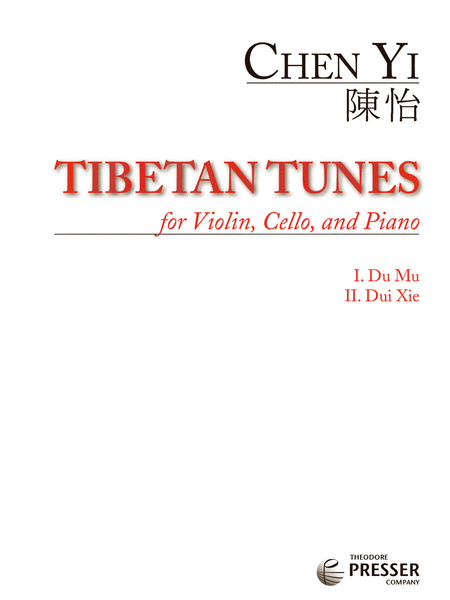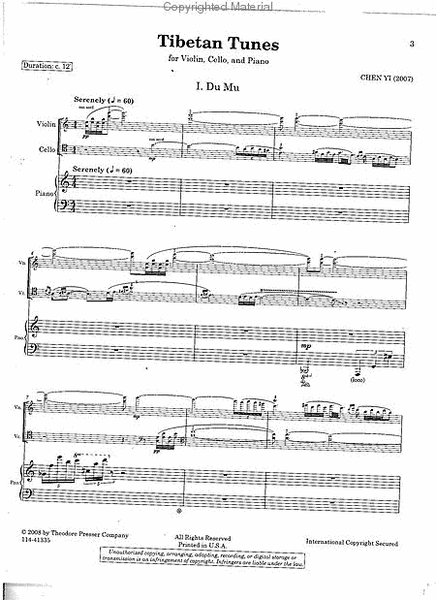Details
Description
SKU: PR.114413350
Composed by Chen Yi. Sws (parts sws to themself). Set of Score and Parts. With Standard notation. 20+8+8 pages. Duration 10 minutes. Theodore Presser Company #114-41335. Published by Theodore Presser Company (PR.114413350).ISBN 9781598061949. UPC: 680160573530. 9x12 inches.
Commissioned by the Barlow Endowment for Music Composition at Brigham Young University, the two-movement Tibetan Tunes was written for the New Pacific Trio and was premiered at the Conservatory of Music at University of the Pacific in January 2007 in Stockton, California. The first movement is inspired by the Tibetan folk tune "Du Mu," while the second movement "Dui Xie" is a kind of Tibetan folk ensemble music typically played with the plucked instrument Zhamunie, the bamboo flute, and the fiddle Erhu. Chen explains, "The music presents the rich gestures of Du Mu (a name of a god in Tibetan Buddhism) in a serene mood." A unique and notable addition to this prolific composer's catalog of works. For advanced players. Duration: 12'.
Commissioned by the Barlow Endowment for Music Composition at Brigham Young University, the two-movement trio Tibetan Tunes was written for the New Pacific Trio (Igor Veligan, violin, Nina Flyer, cello, and Sonia Leong, piano). It was premiered at the Conservatory of Music at University of the Pacific on Jan. 27, 2007 in Stockton, California.The first movement is inspired by the Tibetan folk tune “Du Mu” as played on a recorder (Xiongling). This music presents the rich gestures of Du Mu (the name of a god in Tibetan Buddhism) in a serene mood.“Dui Xie” is a kind of Tibetan folk ensemble music using the same tune in the introduction and coda, played with the plucked instrument Zhamunie, the bamboo flute, and the fiddle Erhu, often performed with singing and tap dancing. The pitch materials of this movement are drawn from folk ensemble music and the lyrical Tibetan folk song “Amaliehuo.”.


 Share
Share